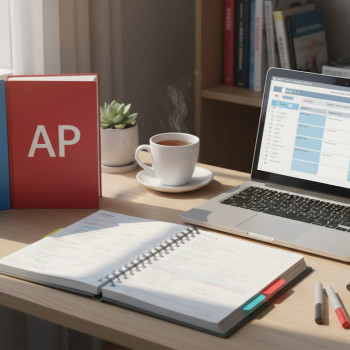Why This Map Matters: APs, Hong Kong, and Your Science or Engineering Dream
If you’re aiming for The Chinese University of Hong Kong (CUHK) or the Hong Kong University of Science and Technology (HKUST) in a science or engineering major, AP exams can be powerful tools — not just for admissions but for earning credit, placing out of introductory courses, and shaping your freshman year. Think of an AP map as your personal itinerary: it tells you which exams to take, which scores will earn you credit or advanced standing, and how your AP plan can shorten your path to the courses you actually want to study.

Who this guide is for
This piece is for high school students (and their parents) preparing AP schedules, especially those applying internationally and targeting CUHK or HKUST for science and engineering. We’ll walk through which AP exams are most valuable, realistic score goals, how universities commonly treat AP scores, sample course-mapping tables, and practical study & application tips. I’ll also mention how Sparkl’s personalized tutoring — 1-on-1 guidance, tailored study plans, expert tutors, and AI-driven insights — can fit naturally into the journey when appropriate.
AP Exams That Matter Most for Science & Engineering
Not all APs are created equal when it comes to science and engineering pathways. Some give you direct credit or placement in foundational courses, while others strengthen your application by demonstrating academic breadth.
Priority AP subjects
- AP Calculus AB / BC — usually the single most influential AP for engineering and many science majors.
- AP Physics 1, 2, C: Mechanics, and C: Electricity & Magnetism — Physics C (calculus-based) is especially relevant for engineering.
- AP Chemistry — important for chemical engineering, materials science, and certain science tracks.
- AP Biology — valuable for biomedical engineering and life sciences majors.
- AP Computer Science A — increasingly relevant for many engineering programs and computer engineering tracks.
- AP Statistics — useful for data-heavy majors and as a complement to research-oriented studies.
Supporting APs that boost your application
APs like AP English Language, AP English Literature, AP Environmental Science, AP Economics, or AP Psychology show intellectual breadth and maturity. They won’t often grant engineering course credit directly, but they can strengthen your transcript and essays.
How CUHK and HKUST Typically Use AP Scores
Universities treat AP scores in two main ways: admissions consideration and academic credit/placement. For admissions, strong AP performance signals readiness for rigorous coursework; for credit, high AP scores (commonly 4 or 5) may translate into exemption from introductory courses or direct course credit.
Admissions vs. Credit: What to expect
- Admissions: AP results can be part of your application profile (transcript, predicted/actual scores). They show preparedness and are often used alongside school curriculum strength, personal statement, and extracurriculars.
- Credit/Placement: Some departments accept AP scores for course waivers or credit. The specific translations (which AP and what score equals which course) vary by university and department.
Because policies can change, treat any AP-credit conversion as provisional until confirmed by the university’s admissions or registrar office. Use AP results to plan your first-year courses, but keep backup options (e.g., taking the introductory course) in case a score isn’t accepted for credit.
Sample AP-to-Course Mapping Table (Science & Engineering Focus)
This table is a general illustration of how APs often map to university courses in science and engineering contexts. Treat it as a planning tool — check the specific department pages when you’re ready to finalize decisions.
| AP Exam | Typical Useful Score | Common University Outcome | Why it helps |
|---|---|---|---|
| AP Calculus BC | 4–5 | Credit for Calculus I and II / placement into advanced math | Allows early enrollment in multivariable or linear algebra depending on program. |
| AP Calculus AB | 4–5 | Credit for Calculus I or placement out of introductory calculus | Shortens math sequence; helpful for early specialization. |
| AP Physics C (Mechanics / E&M) | 4–5 | Placement into second-year mechanics or equivalent engineering physics | Shows calculus-based physics readiness — crucial for core engineering courses. |
| AP Chemistry | 4–5 | Credit or waiver for General Chemistry | Useful for chemical engineering and lab scheduling flexibility. |
| AP Computer Science A | 4–5 | Placement into intermediate programming or CS foundations | Speeds entry into major-specific CS or software engineering modules. |
| AP Biology | 4–5 | Credit or waiver for introductory biology | Helps biomedical tracks and frees space for elective exploration. |
Reading the table: a practical note
Universities might accept the AP for full credit, partial credit, or simply placement out of a course. For example, a program could accept AP Calculus BC for two semesters of calculus credit, or it might only allow placement into the next course without awarding credit. Always confirm the outcome — credit, placement, or just a recommendation — because each affects your schedule and tuition differently.
Building Your AP Plan: From Sophomore Year to Application Season
Start early. A staggered plan reduces burnout and gives you time to learn deeply rather than cramming. Below is a sample three-year trajectory to balance course rigor, test preparation, and college application needs.
Sample timeline
- Sophomore Year: Take foundational courses and consider AP Biology or AP Chemistry (if your school offers lab-prep). Begin regular math progression toward AP Calculus.
- Junior Year: Target AP Calculus BC and AP Physics C (if aiming for engineering) or AP Chemistry for chemical engineering. Take one or two additional APs that align with your interests (AP Computer Science, AP Statistics).
- Senior Year: Finish remaining APs, use early fall to submit applications (if applying early admissions), and continue polishing essays, recommendations, and portfolio projects (if applicable).
Balancing ambition and feasibility
Top-tier programs appreciate rigor, but they also value depth and consistency. It’s better to score 4–5 in three core APs than to take seven APs and score mostly 2–3. Quality often beats quantity.
Study Strategies That Actually Work (and Don’t Waste Time)
Your study strategy should mirror the university mindset: focused, evidence-based, and efficient. Here are methods that produce real score improvements without burning you out.
Practical, high-impact techniques
- Active problem solving: For math, physics, and chemistry, solving past exam questions and free-response items is critical. Analyze both correct and incorrect approaches.
- Iron-clad fundamentals: AP Physics C and AP Calculus assume comfort with calculus concepts. If you’re shaky, invest time early in fundamentals.
- Targeted practice blocks: Short, focused study sessions (45–60 minutes) with a single objective are more effective than marathon cram sessions.
- Mock exams under real conditions: Simulate timing and conditions at least three times before your exam to manage pacing and anxiety.
- Feedback loop: Review mistakes immediately, identify the knowledge gap, and plan a focused mini-lesson to fill it.
How tutoring can multiply your effort
Personalized tutoring — like Sparkl’s 1-on-1 tutors — can accelerate these strategies. The right tutor diagnoses gaps quickly, assigns targeted practice, and models exam-style thinking. When time is limited, tailored study plans and AI-driven insights can identify which topics will yield the biggest score improvements for you.
Application Strategy: Using APs to Strengthen Your CUHK or HKUST Application
APs play two roles in applications: as a signal of readiness and as a tactical asset for course planning. Here’s how to use them well in your application narrative and academic plan.
What to highlight in your application
- High performance in APs that align with your intended major (e.g., Calculus and Physics for engineering).
- Consistent progression in math and science courses — universities love upward trajectories and commitment.
- Projects or research that connect to AP subjects (a physics research project or a coding portfolio complements AP Computer Science).
- Evidence of problem-solving and collaboration, not just test scores — admissions reviewers read your essays and recommendations for context.
Academic planning after admission
If you receive an offer, use your AP results to plan the first-year schedule. Consider these practical steps:
- Confirm which APs the department accepts for credit or placement.
- Decide whether to accept the credit or take the university’s version of the course — sometimes the university course offers a stronger foundation or labs you’ll miss if you skip it.
- Use any freed-up space to pursue research, electives, or double majors/minors.
Common Mistakes Students Make (and How to Avoid Them)
Awareness prevents regret. These are pitfalls I see repeatedly, with quick fixes you can use today.
Pitfalls and quick fixes
- Taking too many APs at once: Prioritize 3–5 strategic APs aligned to your major. Fix: Build a phased plan across junior and senior years.
- Assuming all AP credits are equal: Not all departments accept the same APs for credit. Fix: Verify with department or registrar before planning your university schedule.
- Skipping university basics: Skipping introductory courses may sound appealing but can leave gaps. Fix: If in doubt, enroll in the course or audit it in the first semester.
- Relying solely on self-study: Some students plateau without targeted feedback. Fix: Try 1-on-1 tutoring for a few sessions to diagnose blind spots and get a tailored plan.
Sample First-Year Plans (Using AP Credit Wisely)
Here are two sample course sequences — one for a student who received strong AP credits, and another for a student without AP-based placement. These are representative; your actual plan should reflect department policies and your academic goals.
| Scenario | Semester 1 | Semester 2 |
|---|---|---|
| With AP Credit (Calculus BC, Physics C) | Multivariable Calculus / Intro Engineering Design / General Chemistry (if needed) / Elective | Linear Algebra or Differential Equations / Mechanics Lab or Core Engineering Module / Programming Course / Elective |
| Without AP Credit | Calculus I / Introductory Physics / Intro Engineering Design / Programming Foundations | Calculus II / Physics Lab / Core Engineering Module / Communication Skills course |
Practical Q&A: Your Most Pressing Concerns, Answered
How many APs should I take for a competitive CUHK or HKUST application?
There’s no magic number. Competitive applicants typically take a rigorous and coherent course load — 3–5 relevant APs (with strong performance, especially in Calculus and Physics) combined with solid school grades and meaningful extracurriculars is a common pattern.
Which AP score should I aim for?
Aim for 4 or 5 in the APs that map to your major’s core. A score of 4 is often sufficient for placement at many institutions; 5 gives a stronger chance for credit and demonstrates mastery.
Should I skip a university course if my AP score grants credit?
It depends. Skipping can accelerate you into advanced classes or free time for research. But introductory courses often include campus-specific labs, orientation to local teaching styles, or cohort-building experiences. Consider the trade-offs and consult an academic advisor.
Bringing It Together: A Final Checklist Before You Apply
- Confirm AP-credit and placement policies with the specific department at CUHK or HKUST.
- Plan APs across junior and senior years to balance depth and mental health.
- Use mock exams and targeted feedback to optimize scores; consider short-term tutoring sprints for high-impact gains.
- Prepare a one-page academic roadmap showing how your APs will affect your first two years — it helps in advising conversations later.
- Keep evidence of project work or extended essays that show you can apply AP learning to research or design tasks.
Closing Thoughts — Your AP Map Is Flexible, But Strategic
AP exams are tools: when used strategically, they can open doors, save time, and let you focus on the parts of university study you’re most eager about — be that early research, internships, or advanced electives. The smartest plans aren’t the ones that cram the most APs into a transcript; they’re the ones that align with your academic interests, personal stamina, and the policies of your target departments.
If you want a personalized AP roadmap — which exams to prioritize, score targets tuned to your intended major, and a semester-by-semester plan for your first year — a few sessions of tailored tutoring can accelerate your clarity. Sparkl’s personalized 1-on-1 tutoring can help you identify which AP efforts will yield the biggest returns, design a focused study schedule, and provide expert feedback on practice exams so you head into test day with confidence.
Take a deep breath. Planning for CUHK or HKUST in science and engineering is a marathon, not a sprint. With well-chosen APs, targeted practice, and the occasional expert nudge, you can build an application and academic plan that truly reflects your potential.

Next steps
Start by making a simple spreadsheet: list the APs you’re considering, desired scores, when you’ll take them, and what credit or placement they might bring. Use that document to talk with your counselor, a trusted teacher, or a tutor. Small, deliberate steps now create big options later.
Wishing you focus, curiosity, and steady progress — your engineering or science future is waiting, and the right AP map will help you get there in style.
























No Comments
Leave a comment Cancel